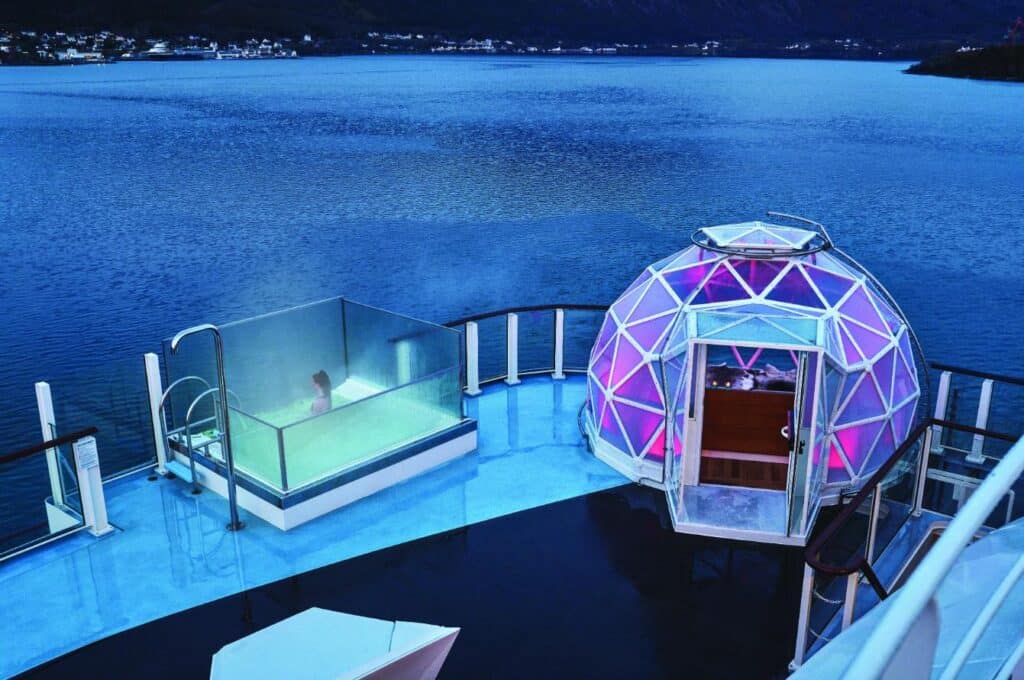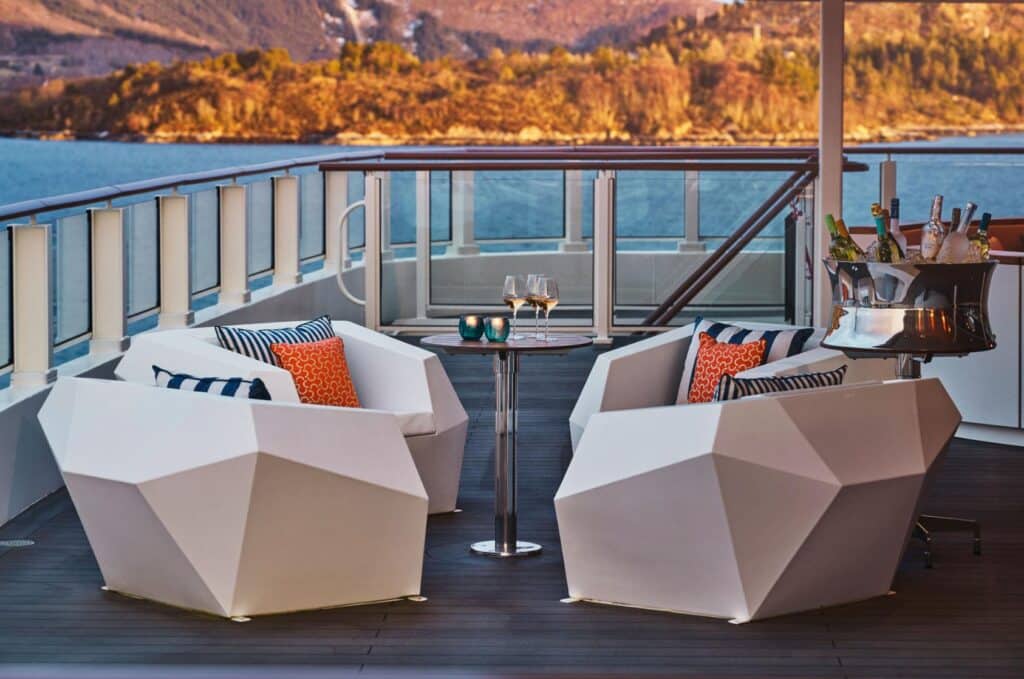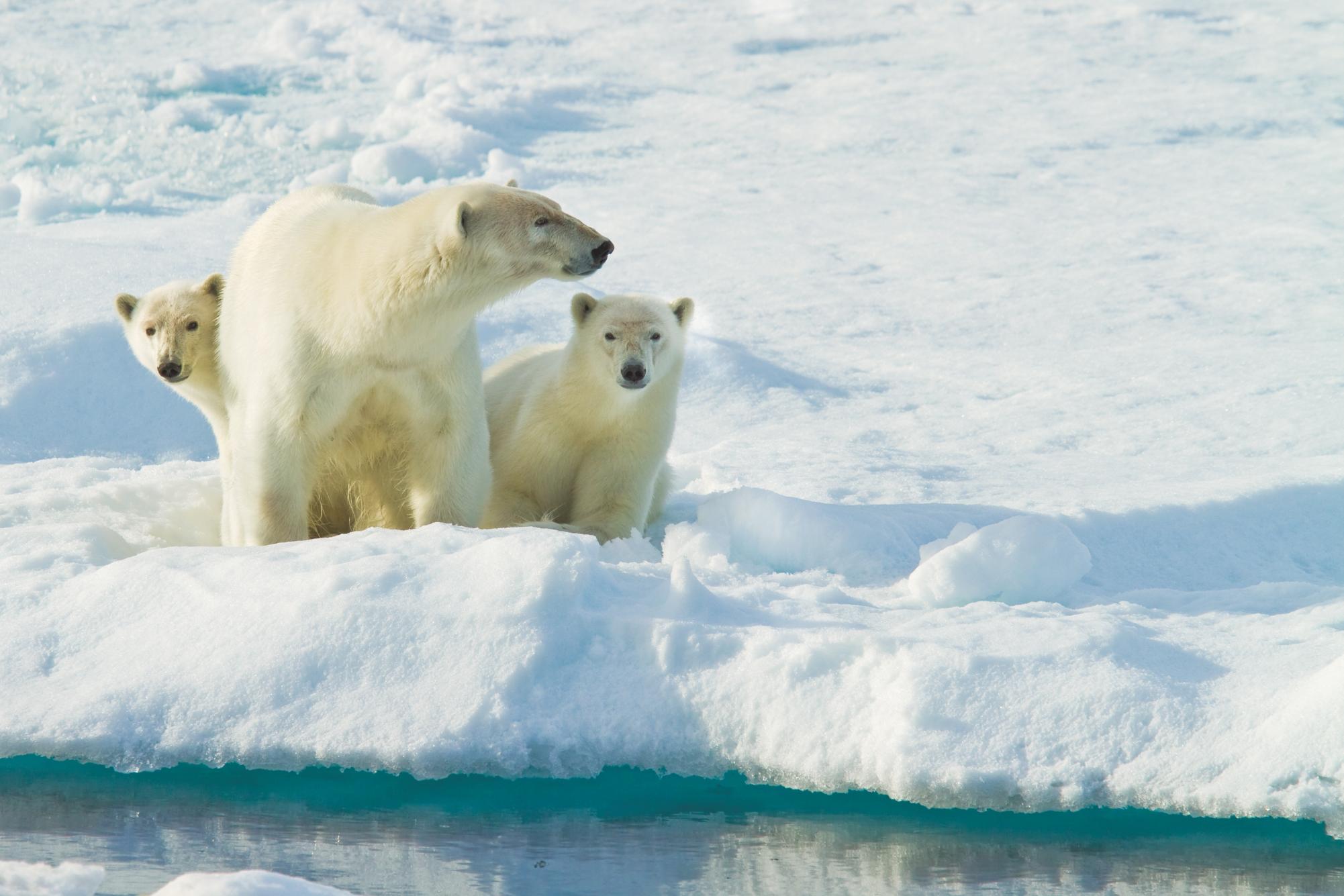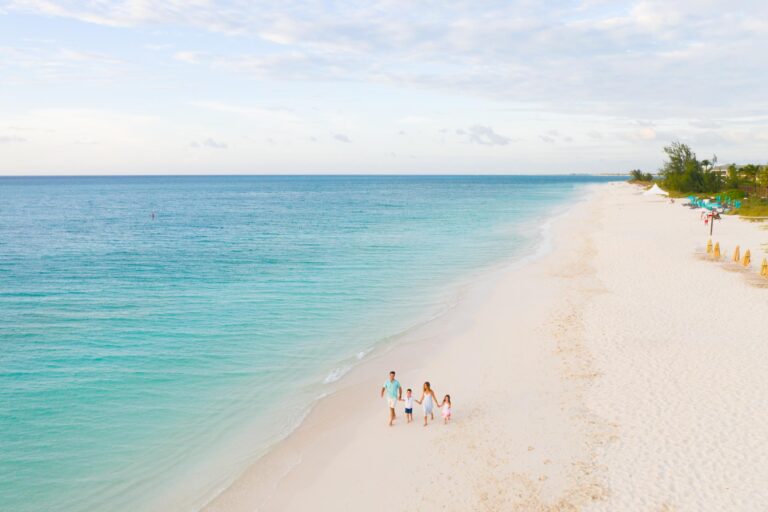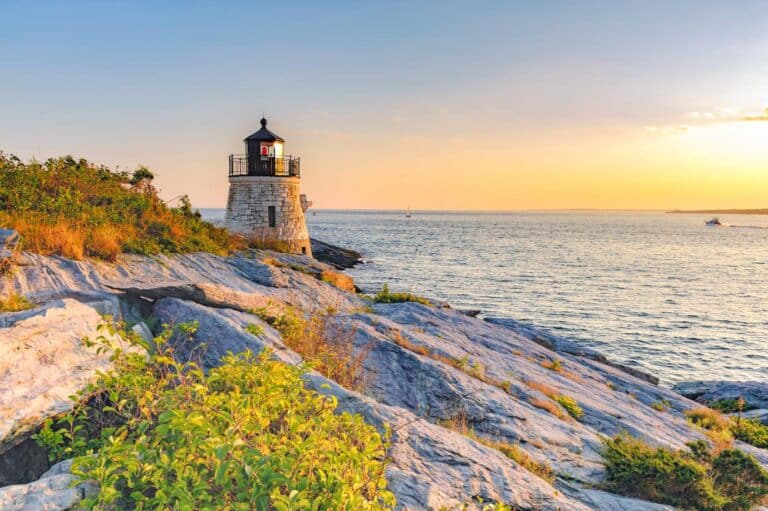Nestled in the icy embrace of the Arctic Ocean, the archipelago of Svalbard—situated between Norway’s mainland and the North Pole—beckons travelers with its pristine landscapes, numerous glaciers and remarkable wildlife. Boasting the northernmost permanent settlements, the northernmost post office, and the chance to witness the incredible Midnight Sun during the summer and the mesmerizing Northern Lights in the winter, Svalbard is an ideal year-round destination—especially if you’re looking for a bit of adventure. And an expedition cruise is the best way to see and experience everything the island has to offer.
Getting To Norway
While Svalbard is decidedly an Arctic gem, a place where untouched beauty and abundant wildlife like walruses and reindeer captivate the hearts of visitors, this remote island is not an easy place to access. That’s why seeing the region aboard an expedition ship is one of the best ways to experience it.
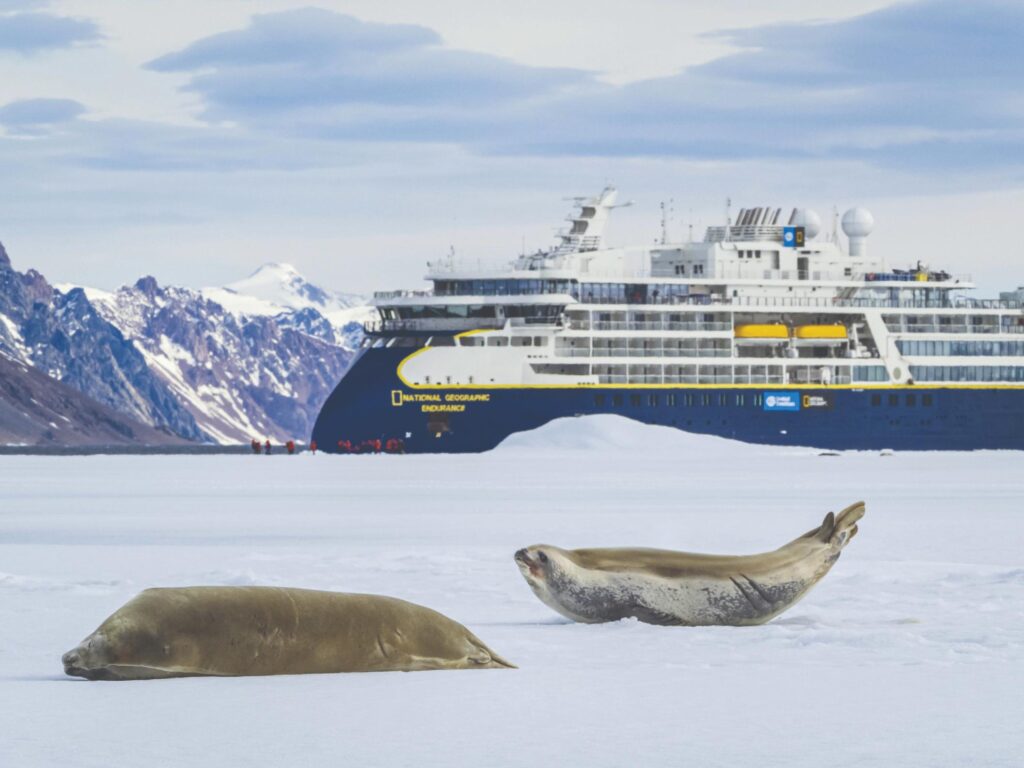
Expedition Sailing
Because of Lindblad Expeditions’ partnership with National Geographic, this team offers plenty of learning opportunities. Led by seasoned naturalists, historians and National Geographic photographers, experts on Lindblad National Geographic Expeditions provide valuable insights into the Arctic’s delicate ecosystems and wildlife behavior, and the history of exploration in the region. Guests onboard the expedition ships have the unique opportunity to participate in informative lectures, engaging discussions and hands-on excursions that deepen their understanding of the Arctic’s wildlife and ecosystem.
One of the partnership’s most recent ships, the National Geographic Endurance, debuted in 2020. A purpose-built polar expedition vessel, it’s equipped with the latest technology and features designed to navigate the challenging Arctic with ease and safety. For instance, the ship’s ice-strengthened hull enables it to sail through ice-infested waters, allowing passengers to venture deeper into the Arctic wilder- ness than conventional vessels (and allows for early-season expeditions like those planned in April and May 2025). It’s also fitted with cutting-edge stabilizers, which minimize the ship’s motion in rough seas, ensuring a comfortable and steady expedition experience.
The vessel also boasts large panoramic windows throughout the ship, providing passengers with breathtaking views from the comfort of the indoors. Outdoors, the Endurance’s expansive observation decks are perfect for wildlife watching, photography, and enjoying the striking scenery.
As far as accommodations go, there are only 76 cabins, carrying a maximum of 138 passengers. For a treat, pick the large balcony suites on the seventh floor, which have a spacious balcony with two chairs, a hammock and table. The suites also boast two single beds that can convert to a queen, a pull-out sofa, coffee table, writing desk and chair, as well as espresso maker and a large walk-in closet. The expanded bathroom has a double vanity, bathtub, towel warmer and rain shower.
What to do in Norway
Outdoor adventures
The Arctic summer, spanning from June to August, is when most expedition ships sail around Svalbard. During this period, the sun never fully sets, casting an ethereal glow over the landscape known as the Midnight Sun. This phenomenon creates an otherworldly ambiance, allowing visitors to explore the archipelago’s wonders at any hour of the day.
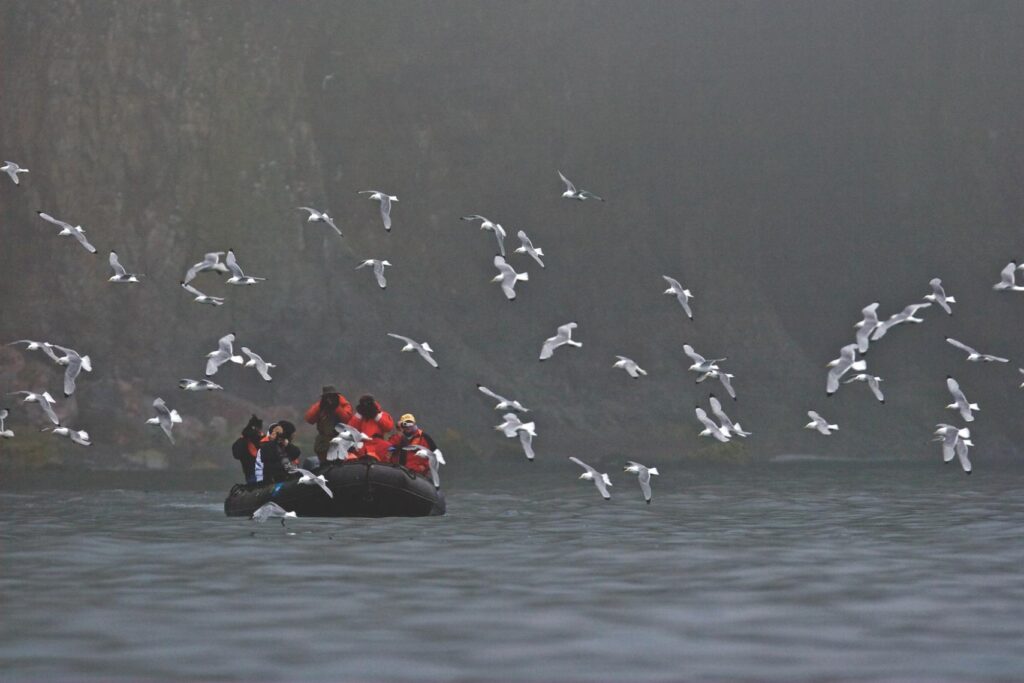
Hiking, kayaking and Zodiac excursions are the order of the day as the Arctic environment temporarily sheds its harshness. The sea ice recedes, opening up opportunities for fjord exploration and wildlife spotting. It’s also a time of vibrant activity in the local wildlife, with many species giving birth and raising their young.
The most popular excursion aboard the Endurance is looking for wildlife aboard a Zodiac with an expedition leader or naturalist. These small inflatable boats hold 8 to 10 people and are able to get close to wildlife, including polar bears. Pro tip: It’s also a great opportunity to ask National Geographic experts for tips on the best way to photograph these creatures in their element.
Wildlife encounters
Svalbard is a haven for wildlife enthusiasts. The region’s most iconic resident, the polar bear, can be spotted hunting on the sea ice or lounging near the water’s edge. Observing these majestic creatures in their natural habitat is a humbling experience, a poignant reminder of the fragile balance of life in the Arctic.
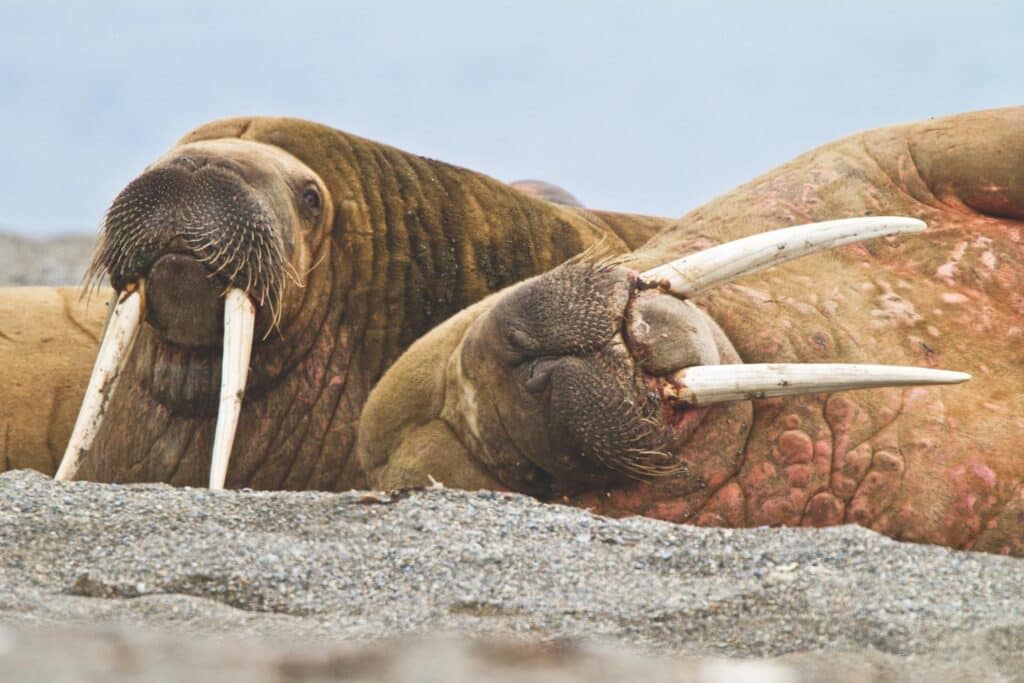
Apart from polar bears, Svalbard hosts a diverse array of wildlife. Arctic foxes scuttle across the landscape, their pristine white coats blending with the surroundings. Reindeer graze peacefully on the tundra, while walruses and seals bask on ice floes and rocky shores. The skies come alive with seabird colonies, including puffins and kittiwakes, adding a touch of avian charm to the Arctic expanse. Going on bird-watching hikes, which can be arranged through Lindblad, is a great way to learn more about the birds from a naturalist, as are the Zodiac excursions.
Glacier spotting
One of the most captivating sights in Svalbard is its glaciers. These colossal rivers of ice wind their way through valleys, reflect- ing the sunlight in a mesmerizing dance of light and shadow. The sight of a glacier calving—when massive chunks of ice break off and plunge into the sea—is a unique testament to the sheer power of nature.
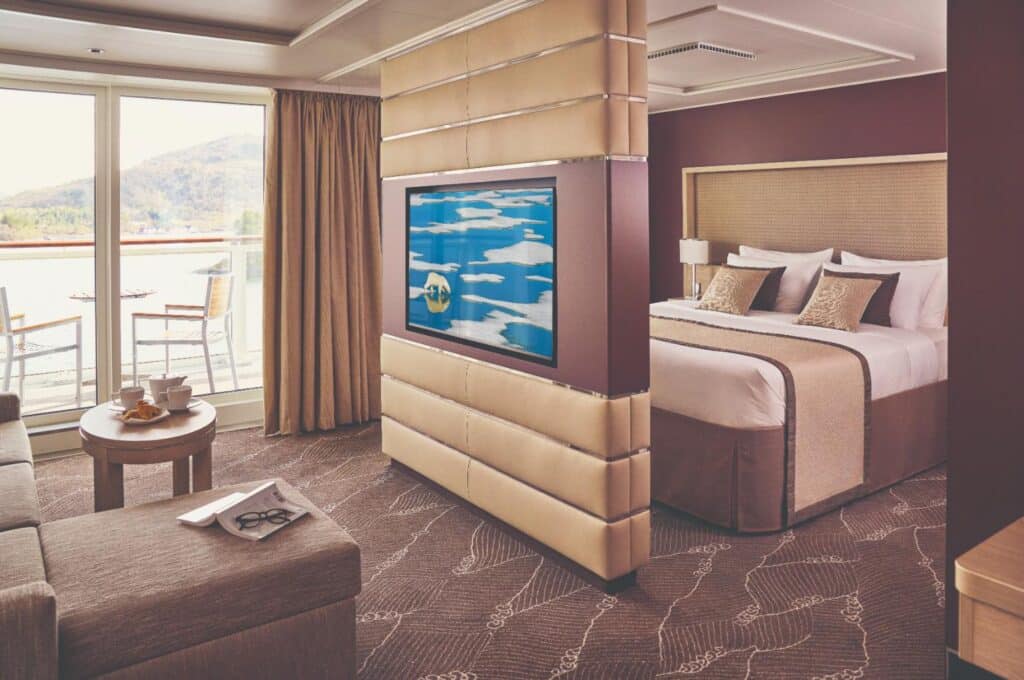
One of the highlights of the National Geographic Endurance is the overnight igloo experience, which also provides a way to spot glaciers from a unique vantage point. On the top deck, there are two igloos available through a lottery system (anyone can sign up and the experience has no additional charge). The curving glass of the igloo is frosted on the side facing the ship’s top deck, for privacy. But the side facing the water is clear and so is the top of the igloo’s dome. This makes for a stunning field of vision to see the glaciers, animals and landscape throughout the night. Bonus: Each of the igloos is located next to an infinity edge hot tub, and they are just steps away from indoor spas that are home to side-by-side Nordic and tropical saunas.
